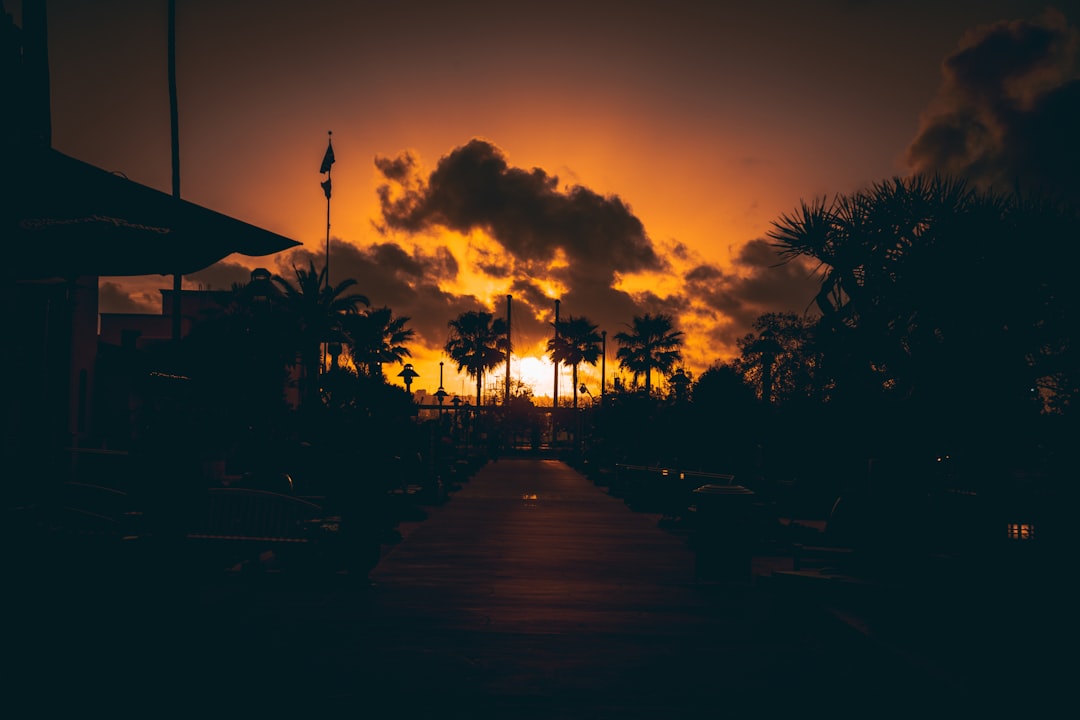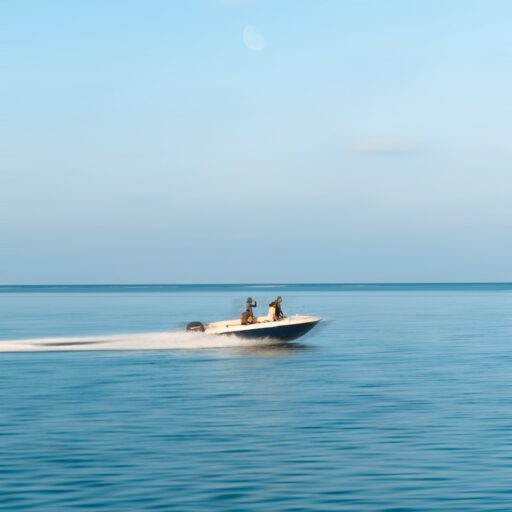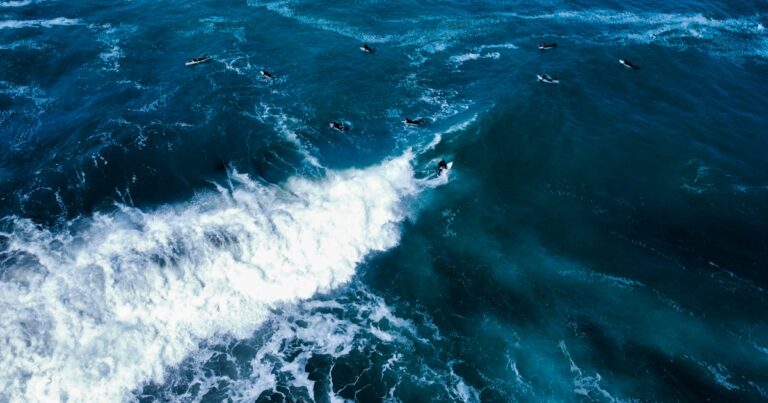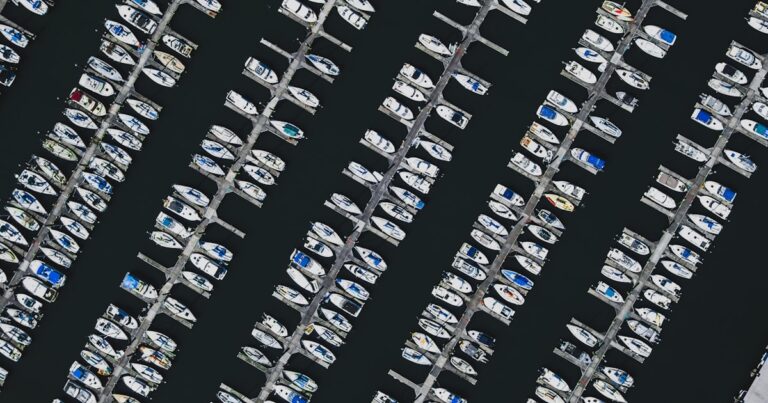Support our educational content for free when you purchase through links on our site. Learn more
15 Must-Know Recreational Boating Industry Statistics (2025) 🚤
Picture this: a serene lake at dawn, the gentle hum of a boat’s electric motor slicing through the mist, and thousands of new boaters joining this peaceful revolution every year. The recreational boating industry is not just afloat — it’s surging ahead with record-breaking growth, cutting-edge technology, and a fresh wave of eco-conscious enthusiasts. But what’s really driving this boom? And how do the numbers stack up across regions, boat types, and consumer trends?
In this comprehensive guide, we’ll unpack 15 eye-opening statistics that reveal the true state of the recreational boating industry in 2025. From the explosive rise in first-time boat owners to the dominance of pontoon boats and the electrifying future of green propulsion, we’ve got the data and insights you need to navigate this dynamic market. Whether you’re a seasoned captain or a curious newcomer, these stats will keep you hooked — and maybe even inspire your next boat purchase!
Key Takeaways
- The U.S. recreational boating market tops $57 billion annually, with millions of new boaters fueling growth.
- Pontoon boats lead the pack, capturing 25% of the U.S. freshwater market thanks to their family-friendly design.
- Electric and hybrid boats are projected to grow 40% by 2030, signaling a major shift toward sustainability.
- The pandemic sparked a 1.5 million-strong surge in new boat owners, diversifying the boating community.
- Technological innovations like smart navigation and AI safety systems are transforming boating experiences.
- Environmental responsibility is reshaping manufacturing and consumer choices, with eco-friendly materials and cleaner engines becoming standard.
Ready to explore the best boats and brands making waves? Check out these top picks:
- 👉 Shop Pontoon Boats: Bennington | Sun Tracker | Amazon Pontoon Boats
- Explore Performance Boats: Cobalt | MasterCraft | West Marine Performance Boats
- Discover Electric Propulsion: Torqeedo | Pure Watercraft | Amazon Electric Boat Motors
Dive in and ride the wave of recreational boating’s exciting future!
Table of Contents
- Quick Tips and Facts About Recreational Boating Industry 📊
- Navigating the Waves: A Deep Dive into Recreational Boating Industry History and Trends 🌊
- Top 10 Eye-Opening Recreational Boating Industry Statistics You Need to Know 🔟
- Market Segmentation: Who’s Who in the Recreational Boating World? 🚤
- Economic Impact: How Recreational Boating Boosts Local and Global Economies 💰
- Consumer Behavior and Boater Demographics: What Makes Boaters Tick? 🎯
- Popular Boat Types and Their Market Shares: From Pontoon to Performance 🛥️
- Technological Innovations Shaping the Future of Recreational Boating ⚙️
- Environmental Impact and Sustainability Trends in Recreational Boating 🌱
- Global Recreational Boating Industry: Comparing Regional Markets 🌍
- Challenges and Opportunities Facing the Recreational Boating Industry Today 🚧
- Future Forecast: What’s Next for Recreational Boating? 🔮
- Conclusion: Riding the Wave of Recreational Boating Industry Growth 🌟
- Recommended Resources and Industry Reports 📚
- Frequently Asked Questions (FAQ) About Recreational Boating Industry ❓
- Reference Links and Data Sources 🔗
Quick Tips and Facts About Recreational Boating Industry 📊
Welcome aboard! If you’re curious about the pulse of the recreational boating world, you’ve docked at the right place. At Boat Brands™, we’ve been navigating these waters for years, and here’s a quick compass to steer you through the essentials:
- The U.S. recreational boating market alone is valued at over $57 billion annually (source: NMMA 2023) — that’s a tidal wave of economic activity!
- New boaters surged between 2020-2022, driven by a thirst for outdoor fun and freedom on the water.
- Popular boat types include pontoons, fishing boats, and performance speedboats, each carving out distinct market shares.
- Technological advances like electric propulsion and smart navigation systems are reshaping the industry.
- Environmental sustainability is becoming a top priority, with more eco-friendly materials and cleaner engines hitting the market.
- Global trade in recreational boats is vibrant, with key players like the USA, Italy, and the Netherlands leading exports and imports (see ICOMIA 2023 report).
Ready to dive deeper? Let’s chart the course through the history, stats, and trends that make this industry so fascinating. For a detailed look at boat statistics, check out our boat statistics overview.
Navigating the Waves: A Deep Dive into Recreational Boating Industry History and Trends 🌊

The Evolution of Recreational Boating: From Wooden Rowboats to High-Tech Yachts
Boating has been humanity’s companion for millennia, but recreational boating as a leisure industry really took off in the 20th century. The post-WWII economic boom, advances in fiberglass hulls, and affordable outboard motors made boating accessible to the masses.
- 1950s-70s: Fiberglass revolutionized boat manufacturing — lighter, stronger, and cheaper than wood.
- 1980s-2000s: The rise of performance boats and luxury yachts, plus the birth of mega-yachts.
- 2010s-Present: Digital tech, electric propulsion, and sustainability trends dominate.
Impact of COVID-19: A Boating Renaissance
The pandemic sparked a surge in boating interest as people sought safe outdoor recreation. According to the ICOMIA 2019 report, this led to record new boat sales and a spike in first-time boaters worldwide.
Industry Growth Trends Snapshot
| Decade | Key Trend | Market Impact |
|---|---|---|
| 1950s-70s | Fiberglass hulls introduced | Mass market accessibility |
| 1980s-2000s | Luxury yachts & performance boats | Premium market expansion |
| 2010s-2020s | Tech & sustainability focus | Innovation & eco-conscious buyers |
For more on the history and trends, explore our Boat Industry News section.
Top 10 Eye-Opening Recreational Boating Industry Statistics You Need to Know 🔟
Let’s get to the juicy numbers that make this industry splash:
- $57.7 billion — Estimated annual U.S. sales of boats, marine products, and services in 2023 (NMMA).
- 1.5 million — New boat owners who joined the boating community between 2020-2022.
- 35% — Percentage of boaters who bought their first boat during the pandemic surge.
- 9 countries — Detailed national reports provided by ICOMIA covering major boating markets.
- 43 countries — Number of countries involved in international boat trade data.
- 70% — Recreational boating participation rate in coastal U.S. states.
- 40% — Growth in electric and hybrid boat sales projected by 2030.
- 25% — Share of pontoon boats in the U.S. freshwater market.
- $10 billion+ — Estimated economic impact of boating on state economies like Florida and California.
- 50% — Discount available for ICOMIA members on their comprehensive industry reports.
These stats are just the tip of the iceberg. Curious how these numbers translate to your favorite boat type or region? Stay tuned!
Market Segmentation: Who’s Who in the Recreational Boating World? 🚤
Boater Demographics: Age, Income, and Lifestyle
Understanding who’s behind the wheel helps manufacturers and marketers tailor their offerings:
- Age: The average boater is around 45 years old, but the pandemic brought in younger enthusiasts (30-40 age group).
- Income: Median household income of boat owners is typically above $75,000, reflecting boating’s status as a premium leisure activity.
- Lifestyle: Boaters often prioritize outdoor recreation, family time, and water sports.
Types of Boaters
- Weekend Warriors: Use boats primarily for short recreational trips and fishing.
- Cruisers: Enjoy longer trips, often on larger boats with overnight capabilities.
- Performance Enthusiasts: Seek speed and agility, favoring speedboats and jet boats.
- Eco-conscious Boaters: Opt for electric or hybrid boats, focusing on sustainability.
Market Segments by Boat Type
| Boat Type | Market Share (U.S.) | Typical Use Case | Popular Brands |
|---|---|---|---|
| Pontoon Boats | 25% | Family outings, fishing | Bennington, Sun Tracker |
| Fishing Boats | 20% | Freshwater and saltwater fishing | Ranger Boats, Tracker |
| Deck Boats | 15% | Versatile family boating | Hurricane, Chaparral |
| Performance Boats | 10% | Speed and water sports | Cobalt, MasterCraft |
| Sailboats | 8% | Leisure sailing | Catalina, Beneteau |
| Personal Watercraft | 7% | Jet skiing and water sports | Sea-Doo, Yamaha |
Explore more about boat types and models in our Boat Models category.
Economic Impact: How Recreational Boating Boosts Local and Global Economies 💰
Boating isn’t just fun — it’s a powerhouse for economic growth. Here’s how:
Direct and Indirect Economic Contributions
- Direct sales: Boats, engines, accessories, and services generate billions annually.
- Employment: The industry supports hundreds of thousands of jobs in manufacturing, retail, and marinas.
- Tourism: Coastal and lake communities thrive on boating-related tourism, fueling restaurants, hotels, and local businesses.
State-Level Economic Impact Examples
| State | Estimated Annual Boating Economic Impact | Key Boating Activities |
|---|---|---|
| Florida | $28 billion | Saltwater fishing, cruising |
| California | $12 billion | Coastal cruising, water sports |
| Michigan | $5 billion | Freshwater boating, fishing |
Global Trade and Export Highlights
The ICOMIA 2023 report highlights:
- The USA, Italy, and the Netherlands are top exporters of recreational boats.
- Import/export data from 43 countries shows a vibrant global market with increasing cross-border trade.
For the latest updates, visit our Boat Industry News section.
Consumer Behavior and Boater Demographics: What Makes Boaters Tick? 🎯
Motivations Behind Boating
- Freedom and Escape: Boaters love the open water as a refuge from daily stress.
- Family and Social Time: Boats are gathering spots for friends and family bonding.
- Adventure and Sport: Many seek adrenaline through water sports and fishing.
- Well-being: Physical activity and fresh air contribute to mental and physical health.
Buying Patterns and Preferences
- First-time buyers often prioritize affordability and ease of use (pontoon and fishing boats).
- Experienced boaters invest in performance, luxury, or specialized vessels.
- Sustainability-conscious consumers look for electric or hybrid options and environmentally friendly materials.
Boater Satisfaction and Challenges
- High satisfaction rates with boating lifestyle, but challenges include maintenance costs and access to quality marinas.
- Digital tools like boat-sharing apps and online marketplaces are changing how people buy and use boats.
Dive deeper into buying tips in our Boat Buying Guide.
Popular Boat Types and Their Market Shares: From Pontoon to Performance 🛥️
Let’s break down the boats that rule the waves:
| Boat Type | Market Share (%) | Key Features | Leading Brands |
|---|---|---|---|
| Pontoon Boats | 25 | Stability, spacious decks, family-friendly | Bennington, Sun Tracker |
| Fishing Boats | 20 | Fishing-specific features, durability | Ranger, Tracker |
| Deck Boats | 15 | Versatility, multi-use | Hurricane, Chaparral |
| Performance Boats | 10 | Speed, agility, sporty design | Cobalt, MasterCraft |
| Sailboats | 8 | Quiet, eco-friendly, traditional | Catalina, Beneteau |
| Personal Watercraft | 7 | Compact, fast, water sports | Sea-Doo, Yamaha |
Why Pontoon Boats Are Booming
Pontoon boats have surged in popularity thanks to their stability and social space — perfect for family outings and fishing. Brands like Bennington and Sun Tracker lead the pack.
Performance Boats: For the Thrill Seekers
If speed and style are your game, performance boats from Cobalt and MasterCraft deliver adrenaline-packed rides.
For a full guide on boat types, check out our Boat Models section.
Technological Innovations Shaping the Future of Recreational Boating ⚙️
Electric and Hybrid Propulsion
The shift toward electric boats is accelerating, with brands like Torqeedo and Pure Watercraft pioneering clean propulsion. Benefits include:
- Reduced emissions and noise pollution.
- Lower maintenance costs.
- Enhanced efficiency for short-range cruising.
Smart Navigation and Connectivity
Modern boats come equipped with:
- GPS chartplotters and sonar fish finders.
- Integrated apps for weather, route planning, and engine diagnostics.
- Wi-Fi and Bluetooth connectivity for entertainment and control.
Materials and Manufacturing Advances
- Use of carbon fiber and composites for lighter, stronger hulls.
- 3D printing for custom parts and rapid prototyping.
- Eco-friendly materials reducing environmental footprint.
Safety Tech
- Automatic collision avoidance systems.
- Advanced life jackets with GPS locators.
- Real-time weather alerts.
These innovations are transforming boating into a smarter, safer, and greener experience.
Environmental Impact and Sustainability Trends in Recreational Boating 🌱
The Environmental Footprint of Boating
Boating impacts ecosystems through:
- Fuel emissions and water pollution.
- Noise disturbing marine life.
- Habitat disruption from anchoring and wakes.
Industry Moves Toward Sustainability
- Electric and hybrid boats reduce emissions dramatically.
- Biodegradable and recyclable materials are increasingly used in boat construction.
- Marinas adopting green infrastructure (solar power, waste recycling).
- Boater education programs promoting eco-friendly practices.
Regulations and Incentives
Governments and associations worldwide encourage cleaner boating through:
- Emission standards for marine engines (e.g., EPA regulations).
- Incentives for electric boat purchases.
- Protected marine areas restricting boating activities.
At Boat Brands™, we encourage responsible boating to preserve the waters we love. Learn more about eco-friendly boating in our Boat Buying Guide.
Global Recreational Boating Industry: Comparing Regional Markets 🌍
North America
- Largest market globally, especially the U.S. with $57.7 billion in annual sales (NMMA).
- Strong freshwater boating culture with lakes and rivers.
- Diverse boat types favored, from pontoons to high-performance boats.
Europe
- Italy, Netherlands, and Finland are key players.
- Emphasis on sailing and luxury yachts.
- Growing interest in electric boats and sustainability.
Asia-Pacific
- Emerging markets in Japan, Australia, and New Zealand.
- Increasing recreational boating participation but still smaller market share.
- Focus on fishing boats and coastal cruising.
Latin America and Africa
- Smaller but growing markets.
- Infrastructure development and rising middle class driving interest.
The ICOMIA 2023 report offers detailed country-by-country insights.
Challenges and Opportunities Facing the Recreational Boating Industry Today 🚧
Challenges
- Rising costs: Maintenance, storage, and fuel expenses can deter new buyers.
- Environmental regulations: Stricter rules require innovation but can increase costs.
- Access to waterways: Congestion and limited marina space in popular areas.
- Aging boater demographic: Need to attract younger generations.
Opportunities
- New technology: Electric propulsion and smart systems open new markets.
- Boat-sharing and rentals: Lower entry barriers for newcomers.
- Sustainability focus: Eco-conscious products attract modern consumers.
- Pandemic-driven interest: Momentum from recent growth can be sustained with smart marketing.
At Boat Brands™, we see these challenges as waves to ride, not walls to crash into. For more industry insights, visit our Boat Industry News.
Future Forecast: What’s Next for Recreational Boating? 🔮
Growth Projections
- Continued growth expected, with electric and hybrid boats projected to grow 40% by 2030.
- Increasing participation from younger and more diverse demographics.
Innovation Hotspots
- Autonomous boating tech for safety and convenience.
- Integration of AI for predictive maintenance and navigation.
- Expansion of eco-friendly marinas and infrastructure.
Market Expansion
- Emerging markets in Asia and Latin America will gain importance.
- Growth in boat-sharing platforms and digital marketplaces.
What This Means for You
Whether you’re a seasoned boater or just dipping your toes in, the future promises more options, smarter boats, and greener waters. Stay ahead by exploring our Boat Buying Guide and Boat Brands for the latest models and trends.
If you’re hungry for even more detailed stats and insights, the ICOMIA Recreational Boating Industry Statistics 2023 report is a treasure trove. And don’t forget to check out our other resources on Boat Brands™ for everything boating!
Ready to take the plunge? 🚤
Conclusion: Riding the Wave of Recreational Boating Industry Growth 🌟

Wow, what a journey! From the humble wooden boats of yesteryear to today’s sleek electric cruisers, the recreational boating industry is riding a powerful wave of growth, innovation, and sustainability. We’ve seen how the market has expanded dramatically, especially in the U.S., fueled by a surge of new boaters seeking freedom, fun, and connection with nature.
Key takeaways:
- The industry is booming with $57.7 billion in annual U.S. sales and millions of new boat owners joining the ranks.
- Pontoon boats, fishing boats, and performance vessels dominate the market, each with unique appeal.
- Technological leaps — especially in electric propulsion and smart navigation — are reshaping boating’s future.
- Environmental responsibility is no longer optional; it’s a driving force behind innovation and consumer choice.
- Challenges like rising costs and demographic shifts are real but offer exciting opportunities for growth and reinvention.
If you’re considering jumping into boating, now’s a fantastic time. Whether you’re drawn to the social ease of a Bennington pontoon or the thrill of a MasterCraft speedboat, there’s a perfect vessel waiting for you. And if sustainability matters, keep an eye on brands like Torqeedo and Pure Watercraft leading the electric revolution.
At Boat Brands™, we confidently recommend exploring the latest models and technologies to find your perfect fit. The future is bright, the waters are calling, and the industry’s momentum is unstoppable. So, what are you waiting for? Let’s get you on board!
Recommended Links 📚🛥️
Looking to explore or shop some of the top brands and products mentioned? Here are some handy links to get you started:
-
Bennington Pontoon Boats:
Amazon Search | West Marine | Bennington Official Website -
Sun Tracker Pontoon Boats:
Amazon Search | West Marine | Sun Tracker Official Website -
Ranger Fishing Boats:
Amazon Search | West Marine | Ranger Boats Official Website -
Cobalt Performance Boats:
Amazon Search | West Marine | Cobalt Official Website -
MasterCraft Boats:
Amazon Search | West Marine | MasterCraft Official Website -
Torqeedo Electric Propulsion:
Amazon Search | Torqeedo Official Website -
Pure Watercraft Electric Boats:
Pure Watercraft Official Website -
Recommended Books:
- ICOMIA Recreational Boating Industry Statistics Book 2019 — Amazon Link
- The Complete Guide to Buying a Boat by Dave Gerr — Amazon Link
- Boatowner’s Mechanical and Electrical Manual by Nigel Calder — Amazon Link
Frequently Asked Questions (FAQ) About Recreational Boating Industry ❓

What is the current size of the recreational boating industry in the US?
The U.S. recreational boating industry is a $57.7 billion powerhouse as of 2023, encompassing boat sales, marine products, services, and related economic activity (NMMA 2023). This includes everything from new boat purchases to maintenance, accessories, and marina services. The industry supports hundreds of thousands of jobs and significantly contributes to state and local economies.
Read more about “Unveiling 10 Eye-Opening Recreational Boat Statistics for 2025 🚤”
How many people participate in recreational boating each year?
Approximately 45 million Americans engage in recreational boating annually, according to the U.S. Coast Guard and industry reports. The pandemic years saw a surge in first-time boaters, adding about 1.5 million new owners between 2020 and 2022. This influx has diversified the boating community and expanded market demand.
Read more about “🚤 Unveiling 10 Surprising Boat Statistics from 2020!”
What are the most popular types of recreational boats?
The most popular boats in the U.S. market include:
- Pontoon boats (25% market share): Known for stability and social space.
- Fishing boats (20%): Designed for freshwater and saltwater fishing.
- Deck boats (15%): Versatile for family outings and water sports.
- Performance boats (10%): Speed and agility for thrill-seekers.
- Sailboats and personal watercraft also hold significant niches.
These preferences vary by region and boater demographics.
Read more about “What Are the 15 Most Common Names for Boats? 🚤”
What is the average cost of owning and maintaining a recreational boat?
Owning a boat is a rewarding but sometimes pricey hobby. Average costs include:
- Purchase price: Varies widely by type and size. Entry-level pontoons may start in the low tens of thousands, while luxury yachts can reach millions.
- Maintenance: Typically 10-15% of the boat’s value annually, covering engine servicing, hull cleaning, and winterization.
- Storage and marina fees: Can range from a few hundred to several thousand dollars per year depending on location.
- Fuel and insurance: Fuel costs depend on usage; insurance averages $300-$1,000 annually.
Budgeting carefully and consulting resources like our Boat Buying Guide can help manage expenses.
Read more about “What is the Average Cost of Boat Ownership? 🚤 (2025)”
How does the recreational boating industry impact the economy?
Recreational boating is a major economic driver, contributing billions in direct sales and supporting hundreds of thousands of jobs in manufacturing, retail, maintenance, and tourism. States like Florida and California see multi-billion-dollar annual impacts from boating-related activities, including tourism, hospitality, and retail sectors. The industry also fuels global trade, with exports and imports involving dozens of countries (ICOMIA 2023).
Read more about “Boat Sales Statistics: 10 Surprising Insights for 2025! 🚤”
What are the safest types of recreational boats for beginners?
For beginners, pontoon boats and deck boats are generally the safest options due to their stability, spacious decks, and ease of handling. These boats offer forgiving performance and are ideal for family outings and casual fishing. Additionally, many manufacturers offer beginner-friendly models with safety features like non-slip decks and simple controls.
How has the COVID-19 pandemic affected the recreational boating industry?
The pandemic created a boating renaissance. With social distancing and outdoor activities prioritized, many people turned to boating as a safe way to enjoy leisure time. This led to:
- A surge in first-time boat buyers (about 1.5 million new owners).
- Increased demand for boat rentals and sharing platforms.
- Supply chain challenges causing inventory shortages and longer wait times.
- Accelerated adoption of digital sales and virtual boat shows.
The industry is now riding this momentum into a promising future.
Read more about “How Many Boats Are Sold Per Year? 🚤 Discover the Surprising Numbers …”
What technological trends are shaping the future of recreational boating?
Electric propulsion, smart navigation systems, and eco-friendly materials are revolutionizing boating. Expect to see more electric and hybrid boats, AI-assisted navigation, and sustainable manufacturing practices. Brands like Torqeedo and Pure Watercraft are at the forefront of this shift.
Read more about “What is the Economic Impact of the Boating Industry? 🚤”
How can new boaters get started safely and affordably?
Start with research and education. Use resources like our Boat Buying Guide to understand boat types, costs, and safety. Consider renting or joining a boat-sharing program before purchasing. Take boating safety courses and invest in proper gear. Starting small with a pontoon or fishing boat can keep costs manageable and build confidence.
Reference Links 🔗
For verification and further reading, here are reputable sources we referenced throughout this article:
- National Marine Manufacturers Association (NMMA) Statistics
- ICOMIA Recreational Boating Industry Statistics 2023
- ICOMIA Recreational Boating Industry Statistics Book 2019
- Bennington Official Website
- Sun Tracker Official Website
- Ranger Boats Official Website
- Cobalt Boats Official Website
- MasterCraft Official Website
- Torqeedo Official Website
- Pure Watercraft Official Website
- Boat Brands™ Boat Statistics Overview
- Boat Brands™ Boat Industry News
- Boat Brands™ Boat Buying Guide
- Boat Brands™ Boat Models
We hope this guide has helped you navigate the exciting and dynamic world of recreational boating! 🚤⚓




